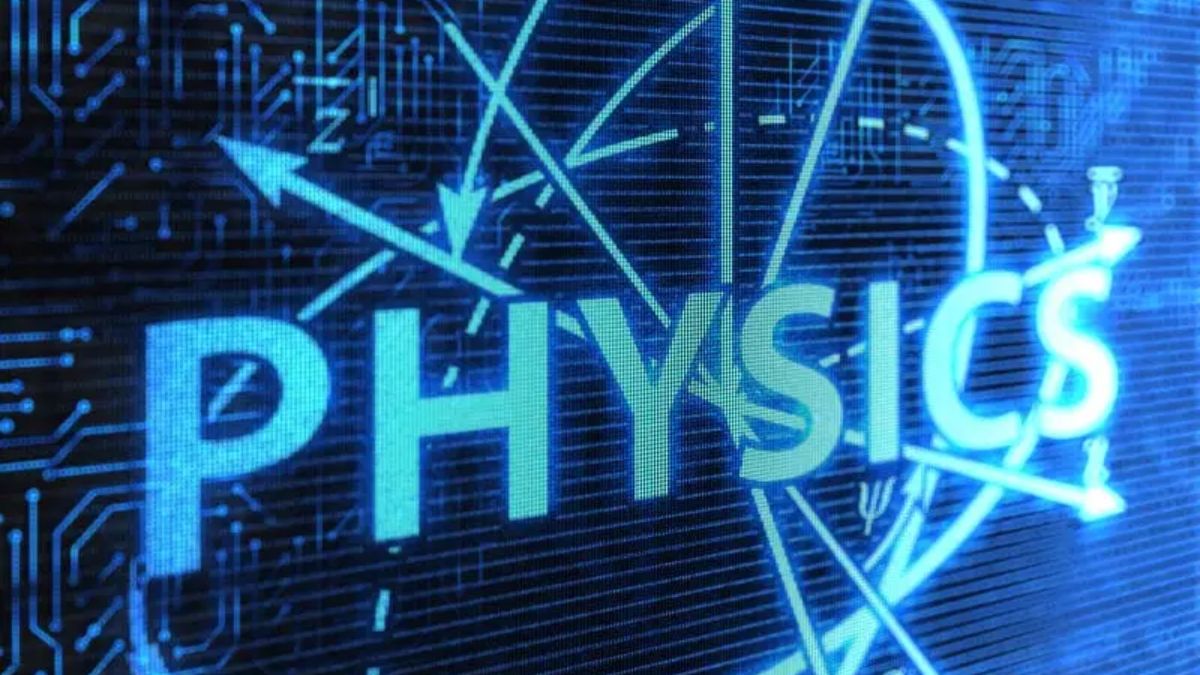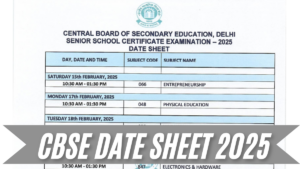The Central Board of Secondary Education in its CBSE Class 12 Date Sheet 2026, announced that the practical examinations will be conducted in January 2026 for all class 12 students. Therefore, it’s time for the students to start preparing for the exam by reading all the important topics and questions that might be asked of them by the respective faculty members in the practical or viva exam.
In this article, we have shared a list of CBSE Class 12 Physics Important Questions with Answers for Practical Exam that can assist all the students with their preparation for the viva exam.
CBSE Class 12 Physics Viva Questions
CBSE Class 12 Physics important questions cover core concepts from Electrostatics, Current Electricity, Magnetism, Optics, and Modern Physics, focusing on derivations, numerical problems, and conceptual understanding of topics like Gauss’s Law, Ohm’s Law, capacitance, and the nature of light. Key questions often involve applying these laws to solve circuit problems, derive formulas for electric fields and potential, and explain phenomena like total internal reflection and nuclear fusion/fission.
CBSE Class 12 Physics Important Questions with Answers for Practical Exam
Practical exams in CBSE Class 12 Physics hold a significant weightage in the board examination. They not only test a student’s theoretical knowledge but also their experimental skills, accuracy, and understanding of scientific concepts. With 30 marks allotted for Physics practicals, preparing well for the viva questions, experiments, and activities becomes crucial for scoring high.
Q1. What is the principle of a spectrometer?
Ans. A spectrometer works on the principle of refraction and diffraction. It is used to study the dispersion of light and to measure the angle of deviation, refractive index, and wavelength of spectral lines.
Q2. Why is a convex lens preferred in optical experiments?
Ans. A convex lens converges parallel rays to a point (focus), making it ideal for forming sharp images needed in experiments.
Q3. What is the least count of a spectrometer?
Ans. The least count is the smallest measurement that can be accurately read. It is calculated as:
Q4. What is the principle of a potentiometer?
Ans. The potentiometer works on the principle that potential drop across a uniform wire is directly proportional to its length, provided current is constant.
Q5. Why is a potentiometer more accurate than a voltmeter?
Ans. Unlike a voltmeter, a potentiometer does not draw current from the circuit, ensuring accuracy in measurement.
Q6. What is the working principle of a galvanometer?
Ans. A galvanometer works on the principle that a current-carrying coil placed in a magnetic field experiences a torque, causing deflection proportional to current.
Q7. What is the difference between p-type and n-type semiconductors?
Ans.
-
P-type semiconductor: Formed by doping a pure semiconductor with trivalent impurity; majority carriers are holes.
-
N-type semiconductor: Formed by doping with pentavalent impurity; majority carriers are electrons.
Q8. What is the principle of a Zener diode in reverse bias?
Ans. A Zener diode allows current to flow in reverse direction once the applied voltage reaches the Zener breakdown voltage, making it useful as a voltage regulator.
Q9. What is the use of a transistor in common emitter configuration?
Ans. It is widely used for amplification purposes, where input is applied to the base-emitter junction and output is taken across the collector-emitter junction.
Q10. What is the principle of a sonometer?
Ans. A sonometer works on the principle of resonance. When the frequency of tuning fork matches the natural frequency of vibrating string, resonance occurs.
Q11. How does the length of a sonometer wire affect its frequency?
Ans. Frequency is inversely proportional to length. Longer the wire, lower the frequency.
Q12. What is the importance of taking mean values in experiments?
Ans. To reduce errors and increase accuracy, mean values of repeated readings are considered.
Q13. Why is parallax removed while taking observations?
Ans. To avoid measurement errors caused by improper eye positioning.
Q14. What are systematic and random errors?
Ans.
-
Systematic error: Caused due to faulty instruments, zero errors, or poor calibration – they are consistent.
-
Random error: Occurs due to unknown/unpredictable reasons like environmental conditions.
Q15. Why is sodium light often used in optical experiments?
Ans. Sodium light is nearly monochromatic, providing a single wavelength that ensures sharper fringes or images.
Q16. What is the difference between coherent and incoherent sources?
Ans.
-
Coherent sources: Emit light waves with a constant phase difference (e.g., in Young’s double slit experiment).
-
Incoherent sources: Emit waves with random phase difference (e.g., bulb or sunlight).
Q17. What is the principle behind Newton’s Rings experiment?
Ans. It works on the principle of interference of light between the reflected rays from a plano-convex lens and a glass plate.
Q18. Why is the resistance of a wire directly proportional to its length?
Ans. Resistance depends on collisions of electrons with atoms; longer length means more collisions, hence greater resistance.
Q19. How does temperature affect resistance of metals?
Ans. In metals, resistance increases with temperature because vibrations of atoms obstruct electron flow.
Q20. What is the principle of Wheatstone bridge?
Ans. The Wheatstone bridge works on the principle of null deflection — when the ratio of resistances in one arm equals that in the other, no current flows through the galvanometer.
Q21. Why is Wheatstone bridge more accurate at null point?
Ans. At null point, galvanometer shows zero deflection, minimizing errors due to resistance of galvanometer or connecting wires.
Q22. What is the principle of a tangent galvanometer?
Ans. It works on the tangent law: When a magnetic needle is under two perpendicular fields, the tangent of its deflection angle is proportional to the ratio of the field strengths.
Q23. Why is the tangent galvanometer placed in magnetic meridian?
Ans. To ensure that the horizontal component of Earth’s magnetic field acts along the plane of the coil.
Q24. Why is the coil of a tangent galvanometer wound on a non-magnetic frame?
Ans. To avoid any interference from the frame’s magnetism.
Q25. What is forward bias and reverse bias in a diode?
Ans.
-
Forward bias: Positive terminal of battery connected to p-side, diode conducts current.
-
Reverse bias: Positive terminal connected to n-side, diode blocks current except leakage.
Q26. Why is silicon preferred over germanium in diodes?
Ans. Silicon has higher thermal stability and lower leakage current compared to germanium.
Q27. What is the working principle of an LED?
Ans. An LED works on electroluminescence – when forward biased, electrons recombine with holes releasing energy as light.
Q28. Why is a capacitor used in a rectifier circuit?
Ans. To smooth out fluctuations and provide DC output by filtering ripples.
Q29. What is resonance in sound experiments?
Ans. Resonance occurs when the frequency of external sound matches the natural frequency of air column or vibrating body, producing maximum amplitude.
Q30. Why is tuning fork preferred in resonance experiments?
Ans. Because it produces a nearly constant frequency and pure tone.
Q31. What is the relation between frequency, wavelength, and velocity of waves?
Ans.
where v = velocity, f = frequency, λ = wavelength.
Importance of CBSE Class 12 Physics Viva Questions
Physics viva questions are designed to check a student’s conceptual clarity, experimental understanding, and presence of mind. Here’s why they matter:
- Boosts Confidence: Answering viva questions helps students explain concepts in their own words.
- Ensures Conceptual Clarity: Teachers test whether students truly understand the experiment, not just perform steps mechanically.
- Improves Practical Knowledge: Viva prepares students to connect theory with real-life applications.
- Scoring Opportunity: With 7 marks allotted, preparing viva questions can significantly raise overall scores.
- Enhances Presentation Skills: Encourages clear communication of scientific ideas.










 UP Board Center List 2026 Released, Chec...
UP Board Center List 2026 Released, Chec...
 UP Board Class 12 Syllabus 2025-26 Out, ...
UP Board Class 12 Syllabus 2025-26 Out, ...
 CBSE Date Sheet 2025 Out, Download Class...
CBSE Date Sheet 2025 Out, Download Class...








